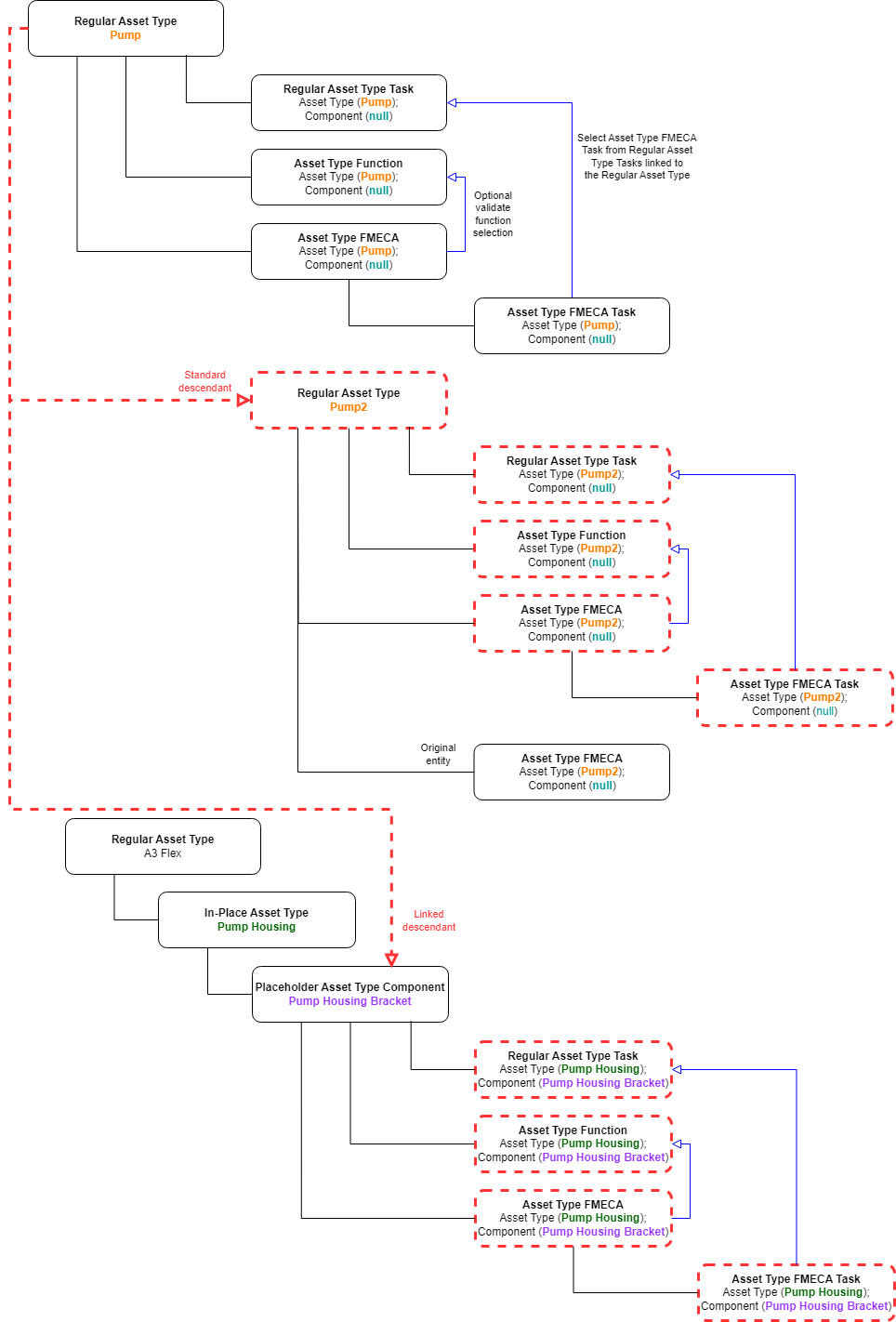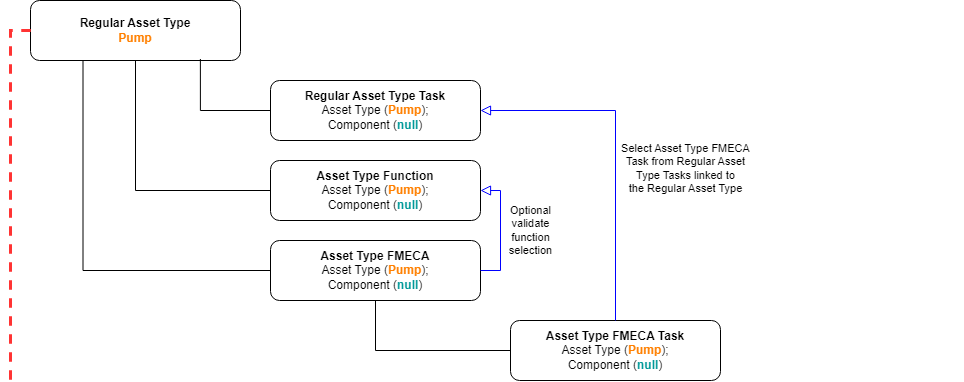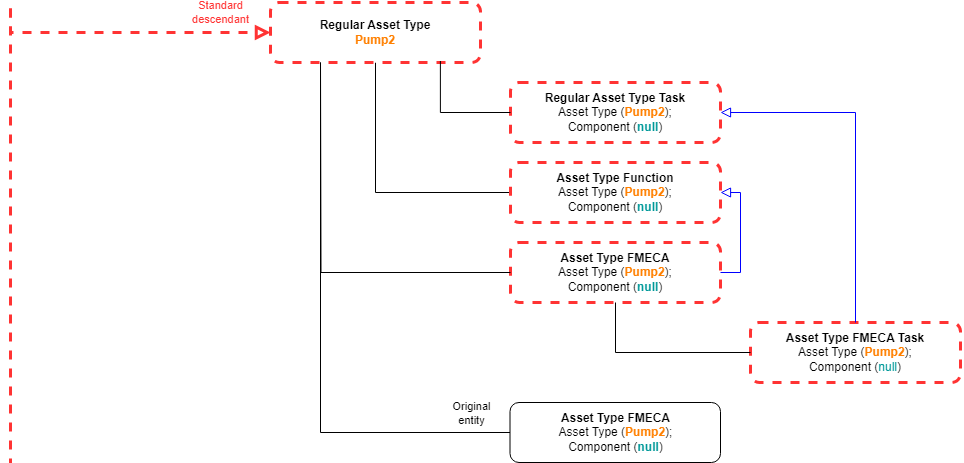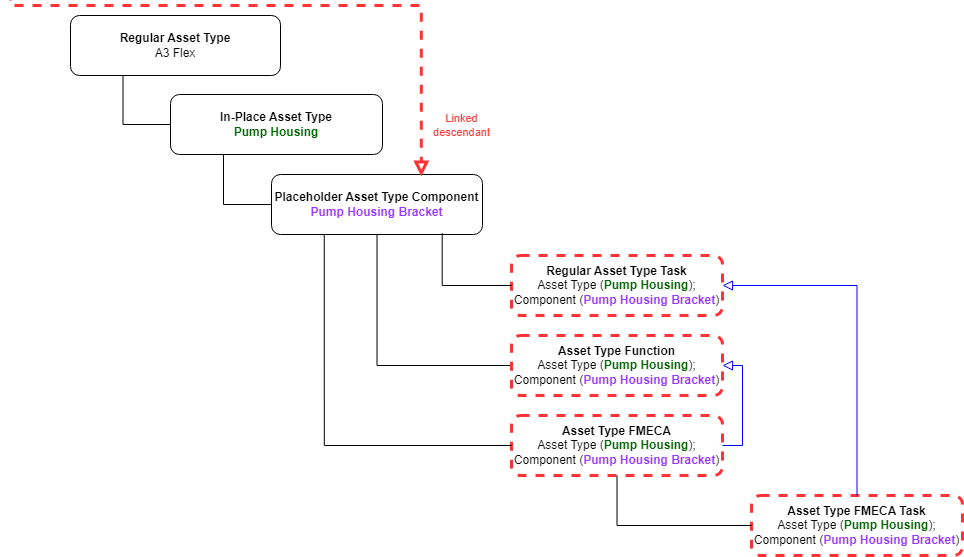Asset Type FMECA
The asset type FMECA functionality enables the analysis of specific asset type component failures.
During failure analysis, a component is examined to detect and analyse the causes, probabilities and consequences of actual or potential failures. Failure analysis determines the ways in which a component can fail and identifies tasks that must be performed to prevent the failures from occurring.
The asset type FMECA dashboard displays all the failure modes that are configured on asset types. In order to capture comprehensive failure analysis information for a component, the master data for failure analysis needs to be configured first. Refer to Failure Analysis Configuration for more information.
The diagram below demonstrates the relationships between the FMECA entities and the inheritance of it items in the asset type tree structure. Refer to the notes below the diagram.

Keep in mind
The following entities are configured and linked to regular asset types:
- regular asset type components
- regular asset type tasks
- asset type FMECA
- asset type functions.
When creating a new asset type FMECA, it can be linked to a specific asset type function.
Asset type FMECA tasks are selected from the existing regular asset type tasks that are linked to the regular asset type and then linked to the asset type FMECA.

When a regular asset type (Pump2) is created as a child entity of the existing regular asset type (Pump), the child asset type (Pump2) inherits the child entities of the parent asset type (Pump). This includes:
- regular asset type components
- regular asset type tasks
- asset type FMECA
- asset type functions.
Original regular asset type tasks, regular asset type components, asset type functions and asset type FMECA can be linked to the regular asset type (Pump2) without having an inheritance relationship with the regular asset type parent (Pump).

Placeholder and in-place entities can also be linked into the asset type tree as children to the original regular asset type (Pump). Once again the entity structure from the original regular asset type is inherited. The parent asset type and component for these child entities are automatically updated the that of their parent items (Pump Housing and Pump Housing Bracket).
